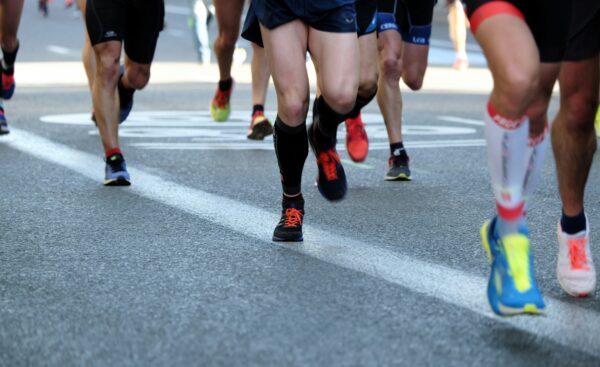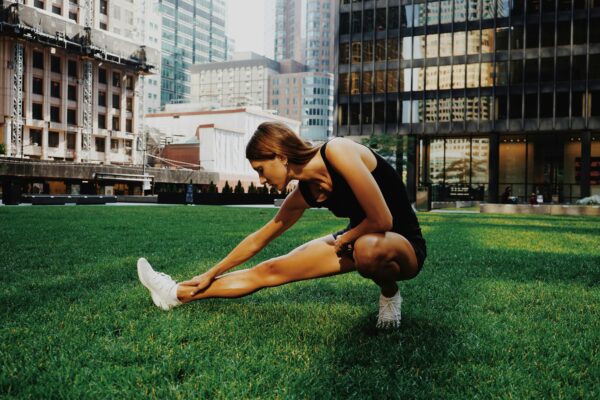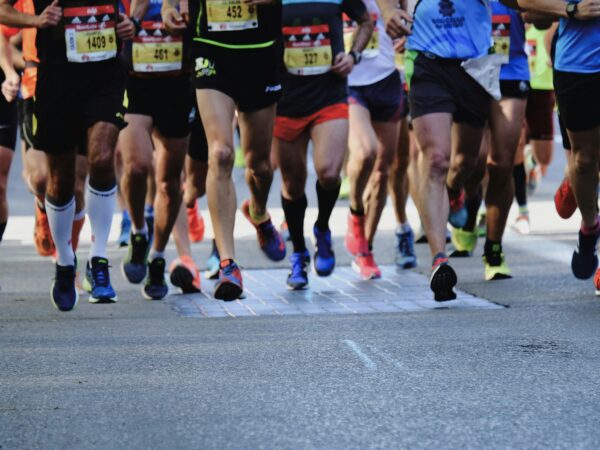How to Buy the Right Running Shoes to Maintain Your Running Goals
Now that we’ve passed the one-month trial period of our New Year’s resolutions, it’s likely been established which have earned a foothold in our lives and which are laid to rest (rest in sweet peace, Dry January). One of the most commonly adopted (and subsequently abandoned) resolutions is a commitment to running. Most suffer through a few dispirited runs before packing it in until the following year. But if you’re one of the few who have maintained their fitness resolutions through the 30-day mark, chances are you’ve caught the run bug.
Now, it’s time to reward yourself with the right shoes to help you maintain that momentum, avoid injuries, and add joy to your runs. Those tattered old gym shoes holding together for dear life might have helped carry you through your first month of running, but trust me, they’re ready for retirement. Without shoes geared specifically for you, your body likely won’t adapt well to the wear and tear of regular running. And while selecting the right pair from a sea of different brands and models might seem overwhelming, it doesn’t have to be.

To help you find the right pair of shoes to maintain your running resolutions, Mike Anderson, the co-founder of Toronto’s BlackToe Running, offers simple steps to selecting shoes for your gait, price point, and style.
The first step for all runners, new and veterans alike, should be to seek the assistance of a specialty running store. Not only will you be supporting a local business, but stores such as BlackToe Running or Vancouver’s Forerunners also prioritize hiring employees with exceptional running expertise, unlike generalist big-box sports stores. The second step is to be clear with your intentions with the sport. What you hope to do with the shoes can affect everything from the amount of cushioning recommended to price point.
“The first thing that we want to know when talking to anyone coming in for their first pair of shoes is how they plan to use them,” explains Anderson, who opened BlackToe’s first location in downtown Toronto in 2013. “If someone is looking to build for their first five-kilometre or 10-kilometre race, our recommendations might be a little different than if they are going to do fitness classes with limited running. We also want to know if they have any specific concerns that we should take into consideration. For example, someone who has a history of Achilles issues will be provided with options that take that into consideration.”

Along with those considerations should be the fit of the shoe itself. Don’t be alarmed if a store’s running expert fits you for a shoe that feels slightly roomier—perhaps a half-size large—than your typical lifestyle shoes.
“We want to make sure the shoe is super comfortable and secure, but we also want a little space in the toe-box as feet will swell or expand over the course of a run, and we want to be comfortable from start to finish,” Anderson says.
Of course, when it comes to finding joy in running, comfort is king. Some runners like their shoes to hug their feet to feel secure. Others prefer to give their feet space to grow throughout a run. If you prefer the former, there’s nothing necessarily wrong with that, especially if you’re sticking to shorter distances, but be aware that they might fit slightly smaller over time if you’re taking on more intensive training.
Run specialty stores can also often offer services that aren’t available at generalist stores, including strike assessments or gait analyses. These tests might be done manually by a store’s run expert or through specialized technology, but their purpose remains the same. Essentially, strike patterns, joint alignment, and pressure points can determine if a runner has more specific needs. For example, if you tend to pronate (if your feet collapse inward when you strike), they’ll be able to assess it and fit you for a stability shoe. If you tend to put an exceptional amount of pressure on certain points of your feet, you might be recommended a high-cushion shoe. Every strike is different, just as every runner is different, so taking the time to get a detailed assessment can often make all the difference.
“New runners tend to look at the shoes their friends are wearing and think, ‘That must be right for me,’” Anderson explains. “But everyone has a distinct gait and will likely need different features from their shoes. So while it’s great to talk to other runners, it’s never a substitute for a proper fitting from an expert.”

Don’t worry. We might have opened a proverbial Pandora’s box, and the search for the best shoes could seem all the more complicated. That’s okay. The crux of our advice is simple: find a specialty store in your area, be clear with your intentions with the sport, and ask as many questions as possible. Strip away all the outside influences, whether that means TikTok reviews or the member of your run club who won’t stop using jargon like “heel-toe drop” and “stack height.”
Focus on yourself as an individual. What’s right for your friends or the most popular online might not be right for you. After all, everyone’s relationship with fitness is unique, so shouldn’t the preparation for the journey be just as personalized?




